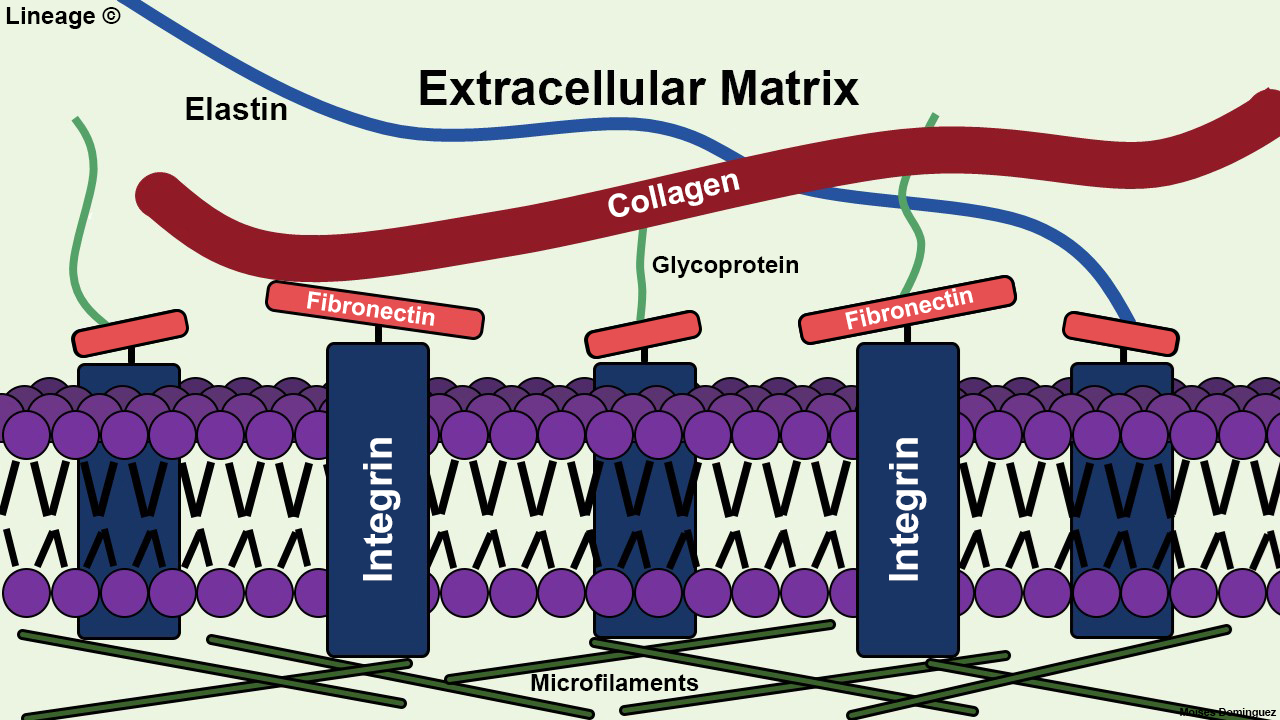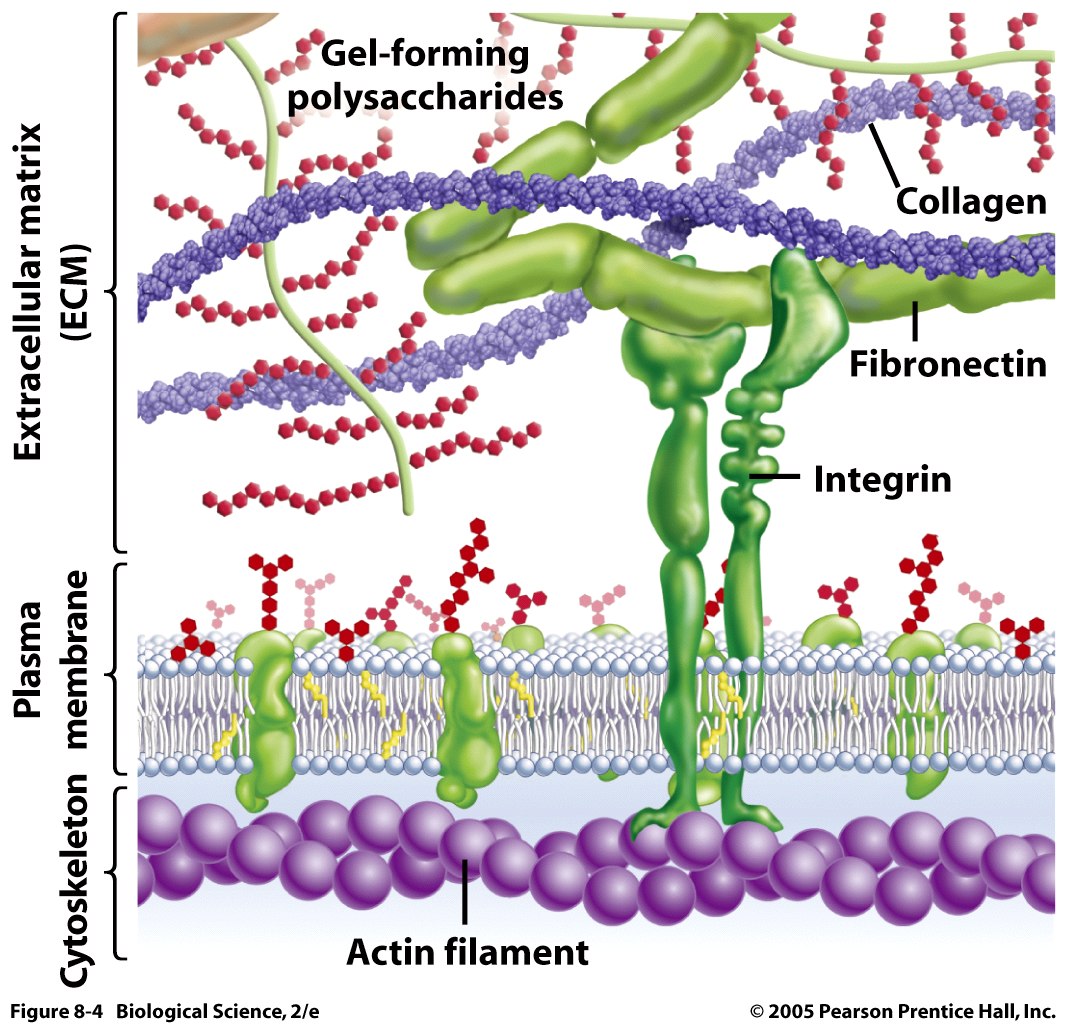Extracellular Matrix Drawing
Extracellular Matrix Drawing - Web extracellular matrix is a general term for the extremely large proteins and polysaccharides that are secreted by some cells in a multicellular organism, and which acts as connective material to hold cells in a defined space. Web scientific medical anatomical 3d illustration extracellular matrix labeled infographic vector illustration scheme. Some of the key connectors are proteins called integrins , which are embedded in the plasma membrane. Loose connective tissue and the extracellular matrix fibers of extracellular matrix. Web extracellular matrix in tissues are the supporting network of proteins that allow the cells of the tissue to function through binding together, dividing and differentiating.
This dynamic structure has many roles in cellular adhesion, signaling, and overall cellular organization. Web the extracellular matrix is a structural support network made up of diverse proteins, sugars and other components. Most animal cells release materials into the extracellular space. Web extracellular matrix is a general term for the extremely large proteins and polysaccharides that are secreted by some cells in a multicellular organism, and which acts as connective material to hold cells in a defined space. Biological diagram with collagen fiber, fibronectin, phospholipid bilayer and cytoskeleton filaments. Web the extracellular matrix (ecm) of hyaline cartilage is homogeneous and glassy, rich in in type ii collagen, proteoglycans such as aggrecan, and structural glycoproteins such as chondronectin. In biology, the extracellular matrix ( ecm ), [1] [2] is a network consisting of extracellular macromolecules and minerals, such as collagen, enzymes, glycoproteins and hydroxyapatite that provide structural and biochemical support to surrounding cells.
Schematic overview of extracellular matrix and its major components
Proteins in the extracellular matrix, like the fibronectin molecules shown in green in the diagram above, can act as bridges between integrins and other extracellular. Blood clotting provides an example of the role of the extracellular matrix in cell communication. It influences a wide number of cellular processes including migration, wound healing and differentiation, all.
Schematic representation of the extracellular matrix (ECM). Collagen
Biological diagram with collagen fiber, fibronectin, phospholipid bilayer and cytoskeleton filaments. Destruction of collagen fibers in skin tissues. Anchoring junctions mechanically attach cells (and their cytoskeletons) to. Extracellular matrix on cell surface receptors. Web the ecm (extracellular matrix) is made up of glycoproteins such as collagen, proteoglycans, and fibronectin. Web the extracellular matrix (ecm) is.
Extracellular Matrix Biochemistry Medbullets Step 1
I hope this helps and answers your question. Web the extracellular matrix is a structural support network made up of diverse proteins, sugars and other components. Proteins in the extracellular matrix, like the fibronectin molecules shown in green in the diagram above, can act as bridges between integrins and other extracellular. Examples include the cuticles.
4.8D Extracellular Matrix of Animal Cells Biology LibreTexts
Web extracellular matrix in tissues are the supporting network of proteins that allow the cells of the tissue to function through binding together, dividing and differentiating. Examples include the cuticles of worms and insects, the shells of mollusks, and, as. I hope this helps and answers your question. In biology, the extracellular matrix ( ecm.
Illustration of Extracellular Matrix (ECM) molecules. The ECM is
Destruction of collagen fibers in skin tissues. Web the ecm (extracellular matrix) is made up of glycoproteins such as collagen, proteoglycans, and fibronectin. The type and composition of the ecm vary depending on several factors including the tissue and organ of the body. It influences a wide number of cellular processes including migration, wound healing.
(A) Schematic of the extracellular matrix. Cells lining ducts or blood
Accumulated knowledge clearly demonstrated over the last decade that ecm plays key regulatory roles since it orchestrates cell signaling, functions, properties. The primary components of these materials are glycoproteins and the protein collagen. The ecm of skeletal muscle tissue contains three layers. The ecm in the central nervous system (cns) is unique in both composition.
Extracellular matrix labeled infographic vector illustration scheme
The ecm of skeletal muscle tissue contains three layers. The type and composition of the ecm vary depending on several factors including the tissue and organ of the body. More direct applications of the extracellular matrix include its role in supporting growth and wound healing. Start practicing—and saving your progress—now: Extracellular matrix on cell surface.
Schematic representation of the extracellular matrix (ECM) components
Web the extracellular matrix is directly connected to the cells it surrounds. Web since the extracellular matrix is thick and mineralized despite its water rich content, it has the additional function of keeping the cells in a tissue separate and physically distinct. It influences a wide number of cellular processes including migration, wound healing and.
Extra Cellular Matrix Is Critical to Neuroplasticity
The ecm in the central nervous system (cns) is unique in both composition and function. Web the extracellular matrix (ecm) is a fundamental component of biological tissues. Most animal cells release materials into the extracellular space. Anchoring junctions mechanically attach cells (and their cytoskeletons) to. Web extracellular matrix is a general term for the extremely.
Extracellular Matrix Proteins
Blood clotting provides an example of the role of the extracellular matrix in cell communication. Proteins in the extracellular matrix, like the fibronectin molecules shown in green in the diagram above, can act as bridges between integrins and other extracellular. Collectively, these materials are called the extracellular matrix. This dynamic structure has many roles in.
Extracellular Matrix Drawing Web since the extracellular matrix is thick and mineralized despite its water rich content, it has the additional function of keeping the cells in a tissue separate and physically distinct. Web the extracellular matrix (ecm) is a fundamental component of biological tissues. Web extracellular matrix (ecm) presents in the muscle niche and is composed of proteins, polysaccharides , and rna etc., which plays an important role in maintaining homeostasis and regulating the development of skeletal muscle. Web the extracellular matrix is a structural support network made up of diverse proteins, sugars and other components. In biology, the extracellular matrix ( ecm ), [1] [2] is a network consisting of extracellular macromolecules and minerals, such as collagen, enzymes, glycoproteins and hydroxyapatite that provide structural and biochemical support to surrounding cells.
Web Since The Extracellular Matrix Is Thick And Mineralized Despite Its Water Rich Content, It Has The Additional Function Of Keeping The Cells In A Tissue Separate And Physically Distinct.
Functions such as learning, memory, synaptogenesis, and plasticity are regulated by numerous ecm molecules. Accumulated knowledge clearly demonstrated over the last decade that ecm plays key regulatory roles since it orchestrates cell signaling, functions, properties. Loose connective tissue and the extracellular matrix fibers of extracellular matrix. The type and composition of the ecm vary depending on several factors including the tissue and organ of the body.
Web Extracellular Matrix (Ecm) Presents In The Muscle Niche And Is Composed Of Proteins, Polysaccharides , And Rna Etc., Which Plays An Important Role In Maintaining Homeostasis And Regulating The Development Of Skeletal Muscle.
Examples include the cuticles of worms and insects, the shells of mollusks, and, as. Blood clotting provides an example of the role of the extracellular matrix in cell communication. The extracellular matrix consists of a network of substances secreted by cells (figure 19.1). I hope this helps and answers your question.
It Influences A Wide Number Of Cellular Processes Including Migration, Wound Healing And Differentiation, All Of Which Is Of Particular Interest To Researchers In The Field Of Tissue Engineering.
This dynamic structure has many roles in cellular adhesion, signaling, and overall cellular organization. Types of extracellular matrix 3. Web the exact number of extracellular matrix macromolecules in the human body is unknown. In biology, the extracellular matrix ( ecm ), [1] [2] is a network consisting of extracellular macromolecules and minerals, such as collagen, enzymes, glycoproteins and hydroxyapatite that provide structural and biochemical support to surrounding cells.
Two Major Classes Of The Ecms Are Known:
Web we focus on the extracellular matrix of vertebrates, but the origins of the extracellular matrix are very ancient and virtually all multicellular organisms, make it; Web courses on khan academy are always 100% free. Some of the key connectors are proteins called integrins , which are embedded in the plasma membrane. Web the extracellular matrix (ecm) of hyaline cartilage is homogeneous and glassy, rich in in type ii collagen, proteoglycans such as aggrecan, and structural glycoproteins such as chondronectin.










